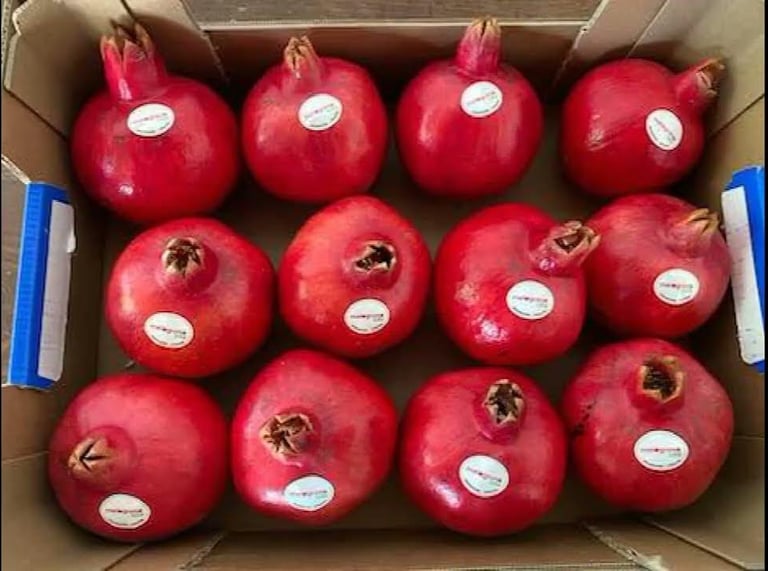Call Us : +91 83209 96560 +91 90029 00592 Mail Us : contact@vhamoverseas.com
Pomegranate
Visual Specifications
Size: Pomegranates are of a uniform size, with a minimum diameter typically of 7.5 cm or more, depending on the destination market.
Color: The color are typical of the variety. The fruit should have a bright, attractive red or pinkish color depending on the cultivar.
Shape: Pomegranates have a rounded shape without deformities or noticeable irregularities.
Skin Condition: The skin is free from major cracks, scars, or discolorations. Minor blemishes may be occur, but the overall appearance must be clean.
Blemishes and Bruises: No significant bruising, cuts, or damage are present.
Ripeness: Pomegranates are fully ripe but not overripe. The fruit should have a firm outer skin and a well-filled interior.
Internal Quality: The seeds inside (arils) are firm, juicy, and free from mold or decay.


Internal Quality
Aroma and Flavor: Sweet to slightly tart, depending on the variety.
Arils: Bright, juicy, and uniform in color (usually ruby-red).
Juice Content: High, indicating freshness and ripeness.
Harvested at the optimal stage of maturity to ensure good shelf life and taste during transit.
Brix level (sugar content): Will be within market-acceptable standards, typically 12–16%.
Shelf Life: Typically 2–3 weeks at 5–8°C with 85–90% humidity.


Packaging, Handling & Compliances
Packaging: Sturdy, ventilated boxes to prevent bruising and maintain freshness.
Labeling: Clear labels with country of origin, weight, and variety.
Preservation: Wax coatings or modified atmosphere packaging to extend shelf life.
Compliance with international phytosanitary standards (e.g., USDA, EU).
Free from pests, mold, or diseases.
Certification such as Global G.A.P., organic, or fair trade (if applicable).


